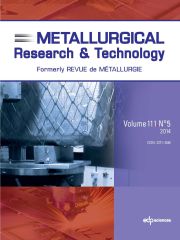Article contents
The future of mobility and its critical rawmaterials
Published online by Cambridge University Press: 22 March 2013
Abstract
Concerns for climate change and declining oil reserves lead to a shift of transportationsystems in many industrial countries. However, alternative drive concepts contain to someextent critical raw materials. Since the availability of certain raw materials could bedecisive for the success of emerging technologies, concerns are growing about thepotential limitation of resources. This brought about a growing attention to the subjectsof criticality and resource security of raw materials by science, policy and industry.Four of the resulting surveys are described in terms of their framing of criticality,their indicators for evaluating criticality, and their rankings of potentially criticalraw materials. Critical raw materials are used in alternative drive concepts because oftheir specific properties. The focus of our work lies on batteries for electric vehicleswith special attention to lithium-ion batteries being one of the most promising candidatesfor energy storage there. Lithium-ion batteries use as major cathode materials lithium,manganese and cobalt, all of which are potential critical. A material flow model of theglobal manganese cycle is developed. It could be identified that there is a lack ofrelevant data for processes and flows. The lack of data impedes a comprehensive view andtherefore no final conclusions could be drawn, which advice the need for further research.Using manganese as an example, it could be illustrated how material flow analysis cancontribute to compiling relevant preparatory work that can subsequently serve as a basisfor a prospective support of a criticality evaluation and to inform stakeholders andpolicy makers about the effectiveness of various interventions to reduce the risk or theeffects of supply chain disruptions.
Keywords
- Type
- Research Article
- Information
- Metallurgical Research & Technology , Volume 110 , Issue 1: Social Value of Materials , 2013 , pp. 47 - 54
- Copyright
- © EDP Sciences 2013
References
- 21
- Cited by


